The Wandering Pen: A Podcast of Resilience, History, and the Power of Storytelling.
Every story shapes the way we see the world—stories of resilience, creativity, and discovery. The Wandering Pen is a podcast where writers, historians, and storytellers share their journeys—not just through their work but through the challenges they’ve overcome and the strength they’ve found. We dive into personal narratives, history, literature, and the arts, exploring how these stories shape our understanding of the past and present. Join us for inspiring conversations about perseverance, creativity, and the power of storytelling.
Episodes
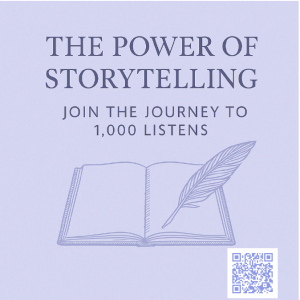
4 days ago
4 days ago
What makes a story worth preserving? This episode reflects on the power of oral storytelling, honoring the guests who’ve shared their voices on The Wandering Pen Podcast. Christine shares her vision, her gratitude, and her mission to reach 1,000 listens by July 31—one story at a time. Join the journey, press play, and pass it on.
Featuring episode highlights from Cristen Hemingway Jaynes and Cynthia O’Neil.
#PodcastEpisode #StorytellingPodcast #OralStorytelling #VoicesThatMatter #TheWanderingPenPodcast #CristenHemingwayJaynes #CynthiaONeil #WritingCommunity #EnvironmentalStorytelling #MixedRaceVoices #HealingThroughStory #LegacyAndVoice
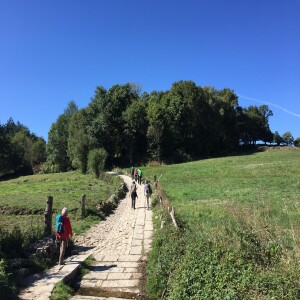
Thursday Jul 03, 2025
Solo Travel, Grief, and the Camino de Santiago: A Healing Pilgrimage
Thursday Jul 03, 2025
Thursday Jul 03, 2025
What happens when you walk 500 miles alone—carrying nothing but a backpack and the weight of grief?
This episode explores the transformative power of pilgrimage, the search for renewal after loss, and the unexpected healing found on the Camino de Santiago. Christine Musser talks with author and artist Maryanna Gabriel about her book Walking the Camino: On Earth As It Is.
Maryanna shares her raw story of grief, the creative process of writing a memoir, and how one woman’s journey across Spain became an act of spiritual alchemy. From moments of exhaustion and uncertainty to flashes of grace, insight, and connection, this conversation invites listeners to consider how movement—both physical and emotional—can reshape our lives.
Whether you're drawn to stories of personal growth, solo travel, or the healing nature of the Camino, this episode is a soulful companion for the path you're on.
#TheWanderingPenPodcast #WalkingTheCamino #CaminoDeSantiago #PilgrimageJourney #GriefHealing #AuthorInterview #MemoirWriting #WomenWhoWrite #TravelStories #PodcastForWriters #SpiritualJourney #WomenWriters

Thursday Jun 26, 2025
From Covered Bridges to Cold Cases: Finding Story in the Shadows
Thursday Jun 26, 2025
Thursday Jun 26, 2025
What stories lie beneath forgotten headstones, behind the silence of a covered bridge, or along the curve of an old back road?
In this episode of The Wandering Pen Podcast, we meet a historian, folklorist, and storyteller who’s made it his mission to uncover Pennsylvania’s forgotten past—one cemetery, mystery, and legend at a time.
Together, we explore haunting tales of unsolved murders, lost grave markers, roadside ghost stories, and the rich but often overlooked history of Pennsylvania’s rural communities. With compassion and curiosity, our guest brings voice to people and places left out of traditional history—those who have been unnamed, misunderstood, or simply forgotten.
This episode is for anyone who loves true crime with historical depth, local legends passed down through generations, and the quiet magic of small towns and hidden places.
Whether you’re a fan of folklore, rural history, storytelling, or road trip-worthy destinations, you’ll find something here to spark your imagination—and maybe even inspire you to take a closer look at your own hometown.
Visit the Pennsylvania Rambler Blog
#TheWanderingPen #TrueCrimeHistory #HiddenPennsylvania #FolklorePodcast #ForgottenStories #RoadsideHistory #UnsolvedMysteries #GhostStories #StorytellingMatters #CoveredBridges #CemeteryTales #RuralLegends
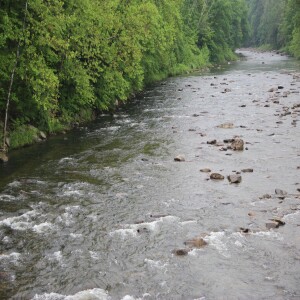
Thursday Jun 19, 2025
The Sacred Land Beneath Our Feet: Echoes of the Endless Mountains
Thursday Jun 19, 2025
Thursday Jun 19, 2025
In this poetic solo episode of The Wandering Pen Podcast, host Christine Musser invites listeners into a world before paved roads and power lines—a time when the Endless Mountains were sacred ground to the Iroquois, Lenape, Delaware, and Shawnee peoples. Through mist and memory, rain and rhythm, Christine reflects on the spirit trails, sacred waterways, and ancestral stories that shaped this land. From Loyalsock Creek to hidden hunting grounds and starlit skies, this episode weaves cultural history, personal experience, and reverent storytelling into a powerful tribute to Indigenous presence, connection to place, and the sacredness of nature.
Join Christine on this immersive walk through time and listen for what the forest still whispers.
#TheWanderingPenPodcast #BeforeTheRoads #EndlessMountains #IndigenousHistory #SpiritTrails #SacredLand #NativeAmericanStories #LoyalSockCreek #AncestralMemory #NatureStorytelling #WalkWithReverence #ChristineMusser #LandAndBelonging #HistoryBeneathOurFeet #CulturalConnection

Thursday Jun 12, 2025
Between Verses and Translations: Nancy Jean Ross on Crafting Literary Bridges
Thursday Jun 12, 2025
Thursday Jun 12, 2025
Join Christine Musser as she delves into the creative and academic worl of Nancy Jean Ross, a distinguished poet and literary translator. Our conversation unravels the intricate tapestry of Nancy’s work, where poetry, research, and translation converge to preserve and celebrate female voices across cultures and eras.
Nancy shares her journey from the lyrical exploration of motherhood in her award-winning chapbook A Gold Seed, Green Pain to her profound research on the Mexican writer Rosario Castellanos. Through vivid storytelling, we explore how Nancy’s translations bring Rosario’s intimate and politically sharp letters to life for English-speaking audiences.
As Nancy reflects on her academic journey and the poetic inspiration she finds in everyday experiences and global travels, listeners are invited to a deeper understanding of how personal narratives and scholarly pursuits can illuminate each other. Join us for an exploration of the delicate art of translating not only languages but the essence of human experience.
Find Nancy's thesis "Negotiating the feminine: Travel, Writing and Identity in Rosario Casianos's Non-Fiction" online at the University of British Columbia and in the Asymptote Journal. Nancy's contact info is nr209@nyu.edu.
#PoetryPodcast #LiteraryTranslation #WomenWriters #RosarioCastellanos #MotherhoodInPoetry #TranslatingVoices
#Personal #Political #BilingualWriting #LettersAndLanguage #PoeticVoice
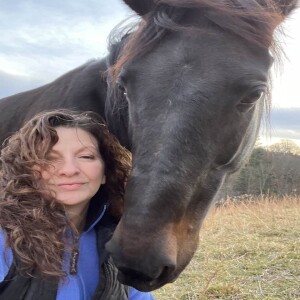
Thursday Jun 05, 2025
Writing from the Wild: Cynthia O’Neil on Horses, Land, and Living Between Worlds
Thursday Jun 05, 2025
Thursday Jun 05, 2025
In this heartfelt episode of The Wandering Pen Podcast, Christine Musser sits down with writer Cynthia O’Neil. From the moss-covered hills of Western North Carolina, Cynthia shares her journey as a triracial writer, her deep bond with horses, and how land, resilience, and ancestral memory shape her voice.
Together, they explore Cynthia’s roots in Massachusetts, her experiences as a teenage mother, loss, her Native heritage, her journey living with lupus, and the devastation and aftermath of Hurricane Helene in the Blue Ridge Mountains. Cynthia also opens up about her creative process, her writing on Substack, and the spiritual lessons she draws from nature and stillness.
Whether you’re a writer, an animal lover, or someone walking your own path of survival and healing, this conversation will resonate with your heart.
Read Cynthia’s work on Substack: https://coneilwriter.substack.com#writinglife #memoir #horsetherapy #indigenouswriters #spiritualresilience #lupuswarrior #northcarolinawriters #substackwriters #healingwithnature #thewanderingpen

Friday May 30, 2025
From Vulnerability to Voice: A Personal Reflection & Future Glimpse
Friday May 30, 2025
Friday May 30, 2025
In this heartfelt solo episode, host Christine Musser pauses to reflect on the growth, gratitude, and genuine connection that have defined the first 21 episodes of The Wandering Pen. What began as a podcast rooted in vulnerability and storytelling has blossomed into a meaningful space for authors, historians, artists, and everyday people to share their truths.
Christine opens up about her challenges with anxiety and finding her voice again—and shares exciting news about upcoming guests, including triracial writer Cynthia O’Neil, resilient real estate trailblazer Natalie Crawford, and literary scholar Nancy Jean Ross. She also announces her upcoming memoir writing class, inspired by Mary Karr’s The Art of Memoir, which starts on June 23.Memoir Writing Course Information Subscribe/Follow The Wandering Pen Podcast Learn more about Christine Musser
If you’re a lover of true stories, raw reflections, and deep conversations, this is your invitation to keep wandering.
#TheWanderingPen #PodcastMilestone #MemoirWriting #StorytellingMatters #WomenPodcasters #RealTalkPodcast #WritersOfInstagram #AuthorLife #PersonalGrowth #CreativeJourney #PodcastAnnouncement #IndiePodcasts

Thursday May 22, 2025
History, Heritage & Nonconformity: Anne Deeter Gallaher Reflects on Her Roots
Thursday May 22, 2025
Thursday May 22, 2025
Today’s episode tells the story of a trailblazing Pennsylvania family who challenged expectations and left a powerful legacy.
Based in the Harrisburg area during the early 1900s, this family defied societal norms: a mother who began a professional singing career at 50, a daughter who became one of the highest-earning women of her time and later led the National Girl Scouts, another daughter who became a doctor and suffragist, and a son who founded a theater—still active today—that’s now on the National Register of Historic Places.
Join me for a fascinating conversation about family legacy, leadership, the women’s rights movement, and the power of the arts to shape culture across generations.
Anne's contact info - Grit & Gravitas Podcast Deeter Gallaher Group Women in High Gear: A Guide for Entrepreneurs, On-Rampers, and Aspiring Executives
Photo Credits: top to bottom Jane Deeter Rippin
Jasper Deeter
Dr. Ruth Deeter - (pictured 4th from the left) Evening News Archives
#FamilyLegacy #WomenInHistory #HistoricTheater #PennsylvaniaHistory #GirlScoutsLegacy #Suffragist #Nonconformists #HarrisburgHistory #TrailblazingWomen #LeadershipThroughGenerations #TheaterHistory #NationalRegisterOfHistoricPlaces #MemoirPodcast #InspiringStories #LegacyAndLeadership #CreativeLegacy

Wednesday May 14, 2025
The Power of Grit: Mari Sandoz’s Legacy as the Story Catcher of the Plains
Wednesday May 14, 2025
Wednesday May 14, 2025
In this episode of The Wandering Pen, host Christine Musser welcomes historian and author Shannon D. Smith, President of the Mari Sandoz Heritage Society, for a compelling conversation about the life, work, and enduring legacy of Mari Sandoz—one of the most powerful voices of the American High Plains.
Born in 1896 in a sod house in northwest Nebraska, Mari Sandoz faced relentless hardship, rejection, and personal sacrifice on her path to becoming a published author. With only an eighth-grade education and a fierce determination, she rose to literary prominence with books like Old Jules, Crazy Horse: Strange Man of the Oglala, The Buffalo Hunters, and Miss Morissa. Sandoz was more than a writer—she was a truth-teller, a creative nonfiction pioneer, and a fierce advocate for authentic Plains history, especially Indigenous perspectives.
Together, Christine and Shannon explore:
How Sandoz’s gritty upbringing shaped her voice and purpose
Why her meticulous research and index card system became legendary
What made her writing style controversial yet visionary
Her legacy as an ally, educator, and story-catcher of the Plains
Why her books remain relevant today, especially for writers, historians, and lovers of the American West
Whether you're a fan of historical fiction, biography, Western history, or women's stories of perseverance, this episode brings Mari Sandoz’s unique journey vividly to life.
🔗 Learn more at mariSandoz.org and thewanderingpen.net
#MariSandoz #AmericanWest #WomenWriters #HistoricalNonfiction #HighPlainsHistory #CrazyHorse #OldJules #NebraskaHistory #IndigenousHistory #StorycatcherofThePlains #WritingWithGrit #WomensVoices #LiteraryLegacy #TheWanderingPenPodcast #NebraskaSandhills
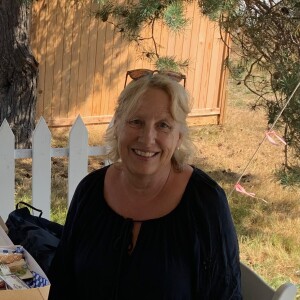
Thursday May 01, 2025
Resilience and the Writer’s Journey: Julie Burtinshaw on Grief and Renewal
Thursday May 01, 2025
Thursday May 01, 2025
In this heartfelt episode, author Julie Burtinshaw joins host Christine Musser to explore the healing power of writing through personal loss and life’s most challenging moments. Julie opens up about her journey back to writing after deep grief, sharing how creativity can be both a refuge and a path to renewal. Together, Christine and Julie reflect on resilience, the challenges of staying motivated, and finding hope even when life feels overwhelming. This candid conversation blends laughter with honest emotions, offering inspiration for writers and anyone navigating grief or creative roadblocks.
If this episode moves you, please share it with others who might benefit—and don’t forget to follow The Wandering Pen Podcast on any podcast platform for more powerful conversations and stories that remind us: storytelling can heal. Julie’s contact is jburtinshaw@gmail.com, and her website is https://burtinshaw.wordpress.com/.
You can find her books on Amazon or by googling for her.
#WritingThroughGrief #JulieBurtinshaw #AuthorInterview #HealingThroughWriting #PodcastForWriters #CreativityAndResilience #GriefJourney #TheWanderingPenPodcast #StorytellingHeals







